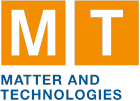Speakers
Dr
André Arnold
(Helmholtz-Zentrum Dresden-Rossendorf Radiation Source ELBE (FWKE))Dr
Jochen Teichert
(Helmholtz-Zentrum Dresden-Rossendorf Radiation Source ELBE (FWKE))Dr
Rong Xiang
(Helmholtz-Zentrum Dresden-Rossendorf Radiation Source ELBE (FWKE))Mr
Shuai Ma
(Helmholtz-Zentrum Dresden-Rossendorf Radiation Source ELBE (FWKE))
Description
After the proof-of-principle demonstration of the world’s first SRF gun operation for a superconducting accelerator i.e. the ELBE LINAC, A second project started with financial support of the German Federal Ministry of Education and Research. The main goal is to achieve high average current (1 mA) and low emittance (1 mm mrad @ 77 pC) for the ELBE LINAC as well as to test new semiconductor cathodes within the BMBF-PCHB project. Quadrupole scan is the usual way to measure the emittance in an accelerator. But because of the influences of the thin-lens approximation and space charge, it is difficult to give a credible emittance. We study them systematically and give the condition of using quadrupole scan for emittance measurements.
Authors
Dr
André Arnold
(Helmholtz-Zentrum Dresden-Rossendorf Radiation Source ELBE (FWKE))
Dr
Jochen Teichert
(Helmholtz-Zentrum Dresden-Rossendorf Radiation Source ELBE (FWKE))
Dr
Rong Xiang
(Helmholtz-Zentrum Dresden-Rossendorf Radiation Source ELBE (FWKE))
Mr
Shuai Ma
(Helmholtz-Zentrum Dresden-Rossendorf Radiation Source ELBE (FWKE))

